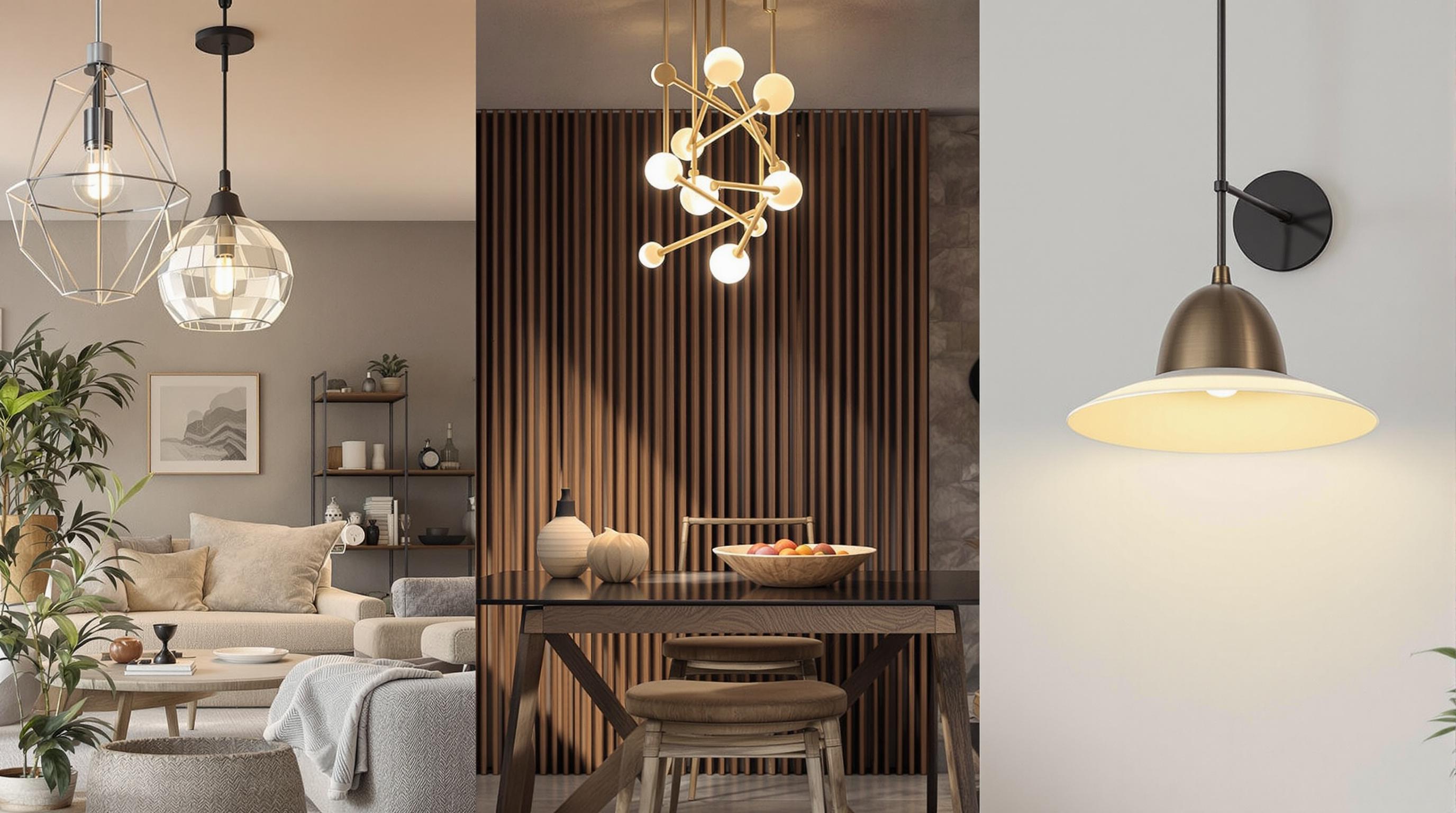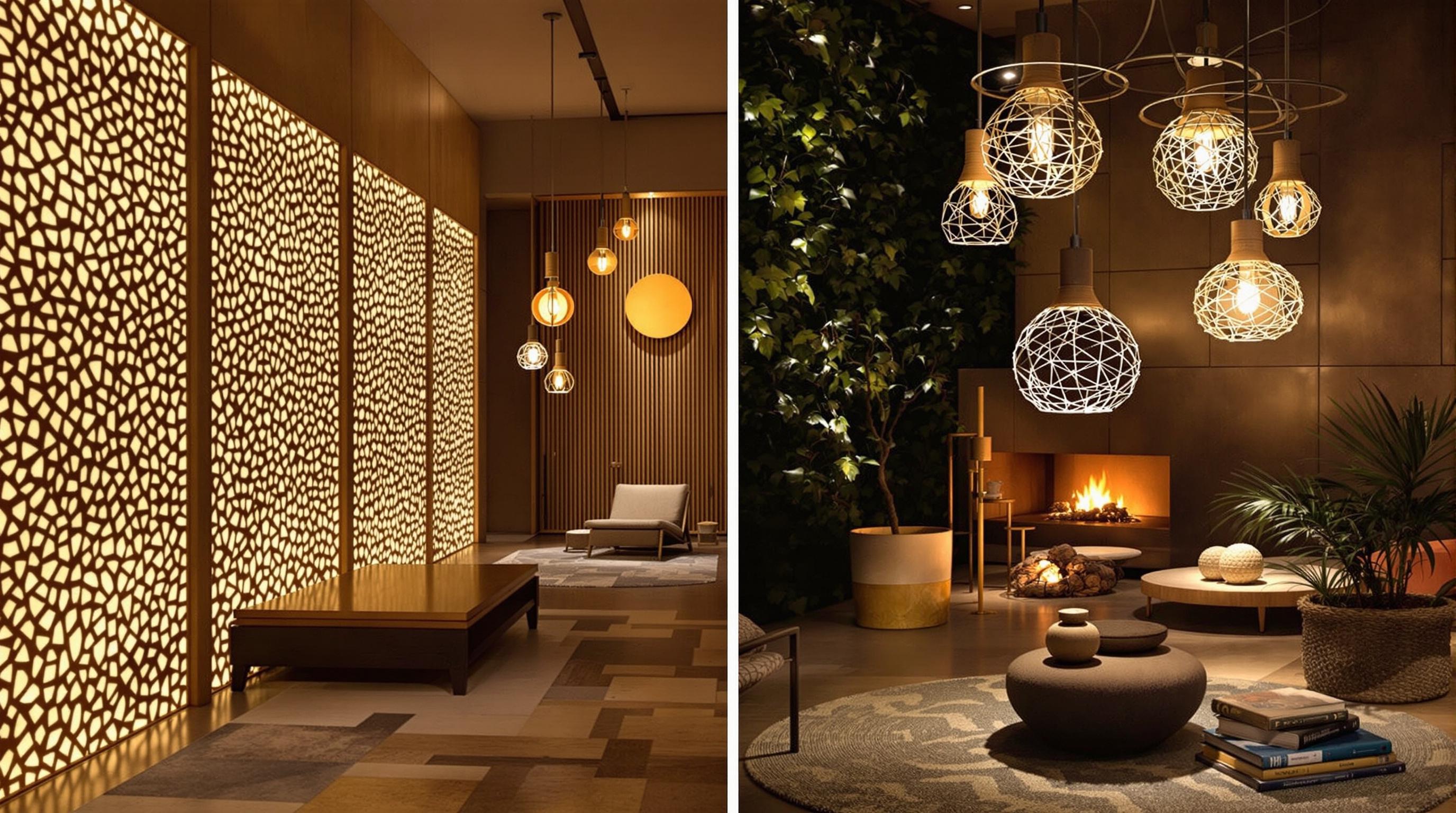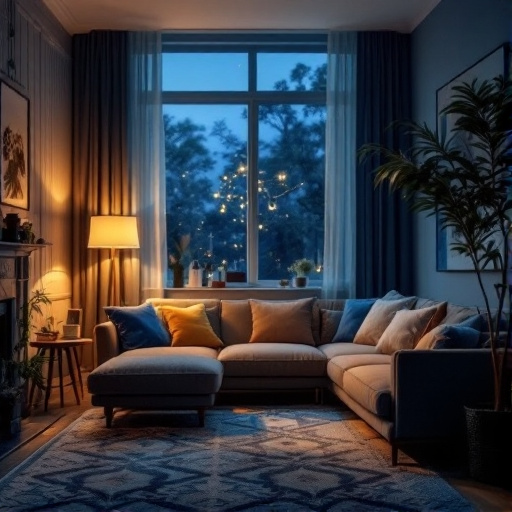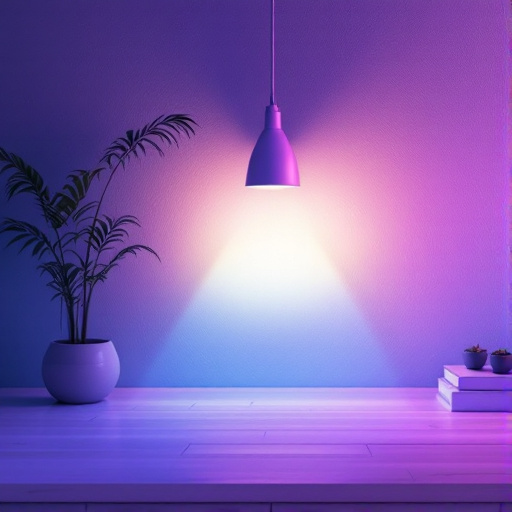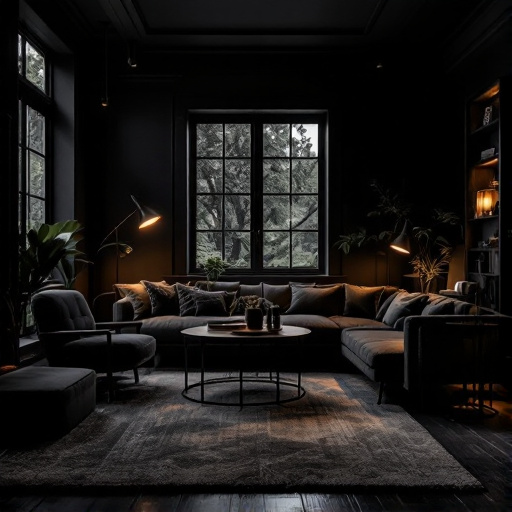Featured Articles
- 12 Innovative Home Lighting Ideas Inspired by Nature’s Hidden Patterns and Ancient Traditions
- 7 Best Human-Centric Lighting Fixtures Released Since 2019 That Truly Transform Your Living Space
- Illuminate Your Mood: How Color Psychology in Home Lighting Can Affect Your Emotions and Well-Being
- Illuminate Your Mood: The Surprising Psychology of Color in Home Lighting Choices
- "Illuminate Your Mood: The Surprising Science of Light Colors and Emotional Well-Being at Home"
"Illuminate Your Mood: The Surprising Science of Light Colors and Emotional Well-Being at Home"
"Illuminate Your Mood: The Surprising Science of Light Colors and Emotional Well-Being at Home"
Light colors can profoundly affect our mood, not merely through the feel of a room but through the science behind color psychology. This article explores how different light colors can impact emotional well-being and offers insights on incorporating them into your home for a happier life.
The Science of Light and Color
To unravel the mystery of how light affects our mood, we first need to delve into color psychology. Research shows that different wavelengths of light evoke various emotional responses in individuals. Cognitive psychologist Dr. David Andrew Brown explains, "Colors can influence our emotions and behavior, sometimes more than we realize." For example, warmer colors like red and orange tend to stimulate energy and excitement, while cooler colors like blue and green are typically more calming.
Color and Mood: The Connection
Imagine walking into a room painted in a soft pastel blue. You might feel an instant sense of calm wash over you, as studies indicate that blue light can lower heart rates and reduce stress. A study conducted by the University of British Columbia found that exposure to blue lighting increased feelings of confidence and tranquility among participants. Conversely, bright red lights are known to elevate heart rates and can even cause irritability if overused. It’s not just a hunch; the data supports it.
Creating Your Emotional Sanctuary
As someone who recently redecorated her apartment, I can attest to the significant difference colors can make. I swapped out my stark white bulbs for warm yellow ones, and suddenly my living space felt more inviting and comfortingly cozy. Lighting can truly transform a home from a mere shelter into a sanctuary.
Warm Light: Comfort and Clarity
Warm light, which ranges from 2700K to 3000K on the Kelvin scale, mimics the natural glow of sunrise and sunset. This type of lighting has been associated with feelings of warmth, comfort, and safety. According to a study published in the Journal of Environmental Psychology, individuals exposed to warmer colored light reported higher levels of happiness and relaxation. Think of the intimate cafes you love so much; they often use warm lighting to create a welcoming atmosphere.
How to Use Warm Lighting in Your Home
Enhancing your home with warm lighting can be as simple as changing your light bulbs. Here are some quick tips:
- Light Bulbs: Replace your standard white bulbs with LED bulbs that emit warm light.
- Lamps and Shades: Utilize lampshades that soften light. Fabric shades diffuse light beautifully!
- Layered Lighting: Incorporate multiple light sources (overhead, table lamps, wall sconces) to create depth and warmth.
The Impact of Cool Light
On the other end of the spectrum, cool light (above 4000K) can enhance focus and energy levels. For example, bright white and daylight bulbs can be particularly effective in workspaces, as research from Harvard University suggests that exposure to cool light improves cognitive performance and alertness. In a home office setting, cool light can boost productivity while minimizing feelings of fatigue.
Using Cool Lighting Effectively
Here’s how you can effectively use cool lighting to your advantage:
- Task Lighting: Use bright, cool lights in work areas to enhance focus and efficiency.
- Adjustable Lighting: Consider smart bulbs that allow you to adjust the hue and brightness throughout the day.
- Natural Light: Maximize daylight by keeping windows uncovered during the day. Natural light is the best mood booster!
Color Therapy: A Case Study
Let’s take a look at a compelling case study from the American Psychological Association, which highlights the power of light colors in a clinical setting. A group of patients suffering from anxiety were exposed to various colored lights as part of a therapy program. Those who were in spaces illuminated with soft green light reported feeling significantly more relaxed and less anxious than those in harsh white light. The findings demonstrated that integrating light therapy could be used as a complementary approach for emotional well-being.
Playing with Colors: Your Home Decor
As you embark on lighting modifications, don’t shy away from using colored light sources! Colored bulbs and filters can add a fun twist to your environment. Imagine the weekend dinner parties with friends sitting under a vibrant purple hue! Creativity should shine not just in your crafts and cooking but also in your lighting choices.
The Power of Colored Light
Studies show that colored lights can enhance feelings of creativity and even improve cognitive function. For instance, red might amp up your energy, making it ideal for exercise zones, while green is calming, perfect for relaxation spaces like reading nooks. Yellow is often tied to optimism and joy—think bright, sunny evenings spent gathered with loved ones.
The Future of Mood Lighting
So, what does the future hold for mood lighting and emotional well-being? With advancements in smart home technology, adjusting your lighting to suit your mood may soon be a breeze. Imagine a world where your lighting changes automatically based on the time of day, elevating your mood when you need it the most. This integration of lighting and digital technology could become a critical component of home design and mental health.
Remember: Less is More
While experimenting with different light colors is essential, it’s essential to remember that balance is key. Too much harsh, blue light, especially in the evening, can confuse our internal circadian rhythms, leading to negative consequences for sleep quality. As the Sleep Foundation notes, reducing blue light exposure in the evening can improve sleep quality and ultimately contribute to better emotional regulation.
A Personal Anecdote
There was a phase in my life when I struggled with low energy and mood fluctuations. I remember one evening while scrolling through interior design blogs, I came across an article discussing light therapy. Curious about its potential, I decided to transform my dimly lit bedroom into a light-infused haven using a combination of soft white and vibrant yellow bulbs. What a difference it made! Not only did I feel uplifted, but I revelled in the newfound warmth of my surroundings. Not only did my environment change; my emotional health saw a remarkable improvement.
Creating Your Own Color Schema
Now that you are armed with insights and tips, it’s time to embark on your journey. Identify which areas in your home require a mood boost and brainstorm color palettes that resonate with you. Make a game of it! Design your own color schema based on your personal experiences and preferences. Do you find peace in nature’s greens, or is it the vibrancy of oranges that invigorates you? Your home should be a reflection of you, designed to nurture and uplift.
Conclusion
In a world where every detail matters, the colors of light in our environment profoundly influence our emotions and overall well-being. Whether you choose warm, comforting hues for cozy nights or cool, invigorating tones for productivity, it’s clear: lighting can be a game changer. By understanding and implementing the science of colors into our homes, we can illuminate not just our surroundings, but our very mood, transforming our spaces into havens of happiness. So why not start experimenting today? You never know what a little light can do.
